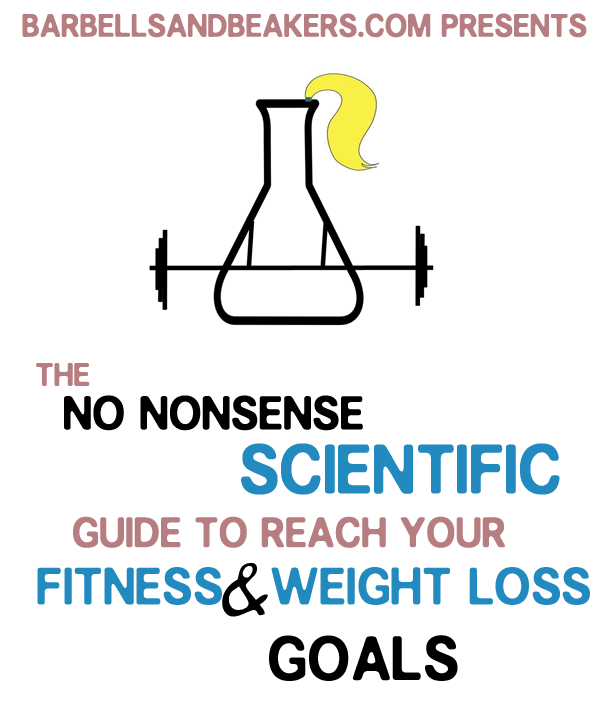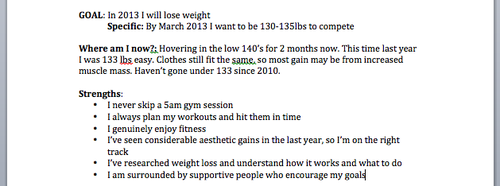Today is New Years Eve and you’ve set your goal, identified your strengths, found weaknesses and fixed them…now what? Now, we make milestones, or check ins.
Check ins are important because they’re a good way to judge your progress. If you’re planning to lose 5 pounds in 2013 you should set a date you want to accomplish it by and work backwards. Let’s take my goal for example: 6 lbs by March 1st. If I start on January 1st, that gives me a little over 2 months, or about 60 days, to accomplish this by. This means I should lose a pound every 10 days. This is a realistic goal, and I can make little check ins every 10 days to be sure that I’m on track.
Now, everyone is different, and you should use whichever method works best for you to check in. I am always on my computer so I used the Stickies app to keep myself on track. A sticky on the side of my computer screen gives the date of each weigh in and where I should be. Other people may use MyFitnessPal, Excel, Fitocracy, a journal, a planner, etc. to check in with their specific goals.
But check ins should go further than that. Let’s look at some of my weaknesses and how I remedy them, specifically the weakness involving eating snacks my classmates brought to class that day. Every day I will check in with myself and see if I worked with my strength and against my weakness. I may write in my planner, “Today I made my 5am workout (yay!) and said ‘no’ to my classmates sugar cookies.” or “Today was a rest day and a classmate brought in cupcakes – my favorite! Since I haven’t had a snack yet this week I ate one happily.” Checking in is about so much more than just, “How much do I weigh today?” It’s also about if you’re kicking your old habits or falling into them again.
Right now make a timeline for your goals. If you plan to save $1,200 this year, that means you should have added $100 to your savings account each month. Set a reminder at the end of every month to transfer that money, or manually do it so you’re conscious of the decision. If you plan to “get healthier” this year by swapping out soda for tea, timeline that. “I want to be a tea drinker by July, and right now I drink 5 sodas a day.” Make a time line where each week you drop a soda a day, or maybe two sodas a week, etc. Your timeline should be a slow, gradual process that lets you reach your goals in a realistic, timely manner.
But what is realistic?
There is no magic number about what a “realistic” weight loss goal is, or a realistic money saving goal is. These are highly individualized. If you find that you’re continually missing your weigh in goals but are “on track,” then your goals may not be realistic. If you find that you’re passing your check ins faster than you anticipated, you may have been too easy on yourself in the first place. Maybe the small tweaks you made had a much bigger impact on your life than you realized?
In any case, you will not be able to judge how your progress is going unless you CHECK IN!
Now that you’ve figured all your goals out you can wake up tomorrow and put all the information you’ve written down over the last few days together to really reach your goals this year!


